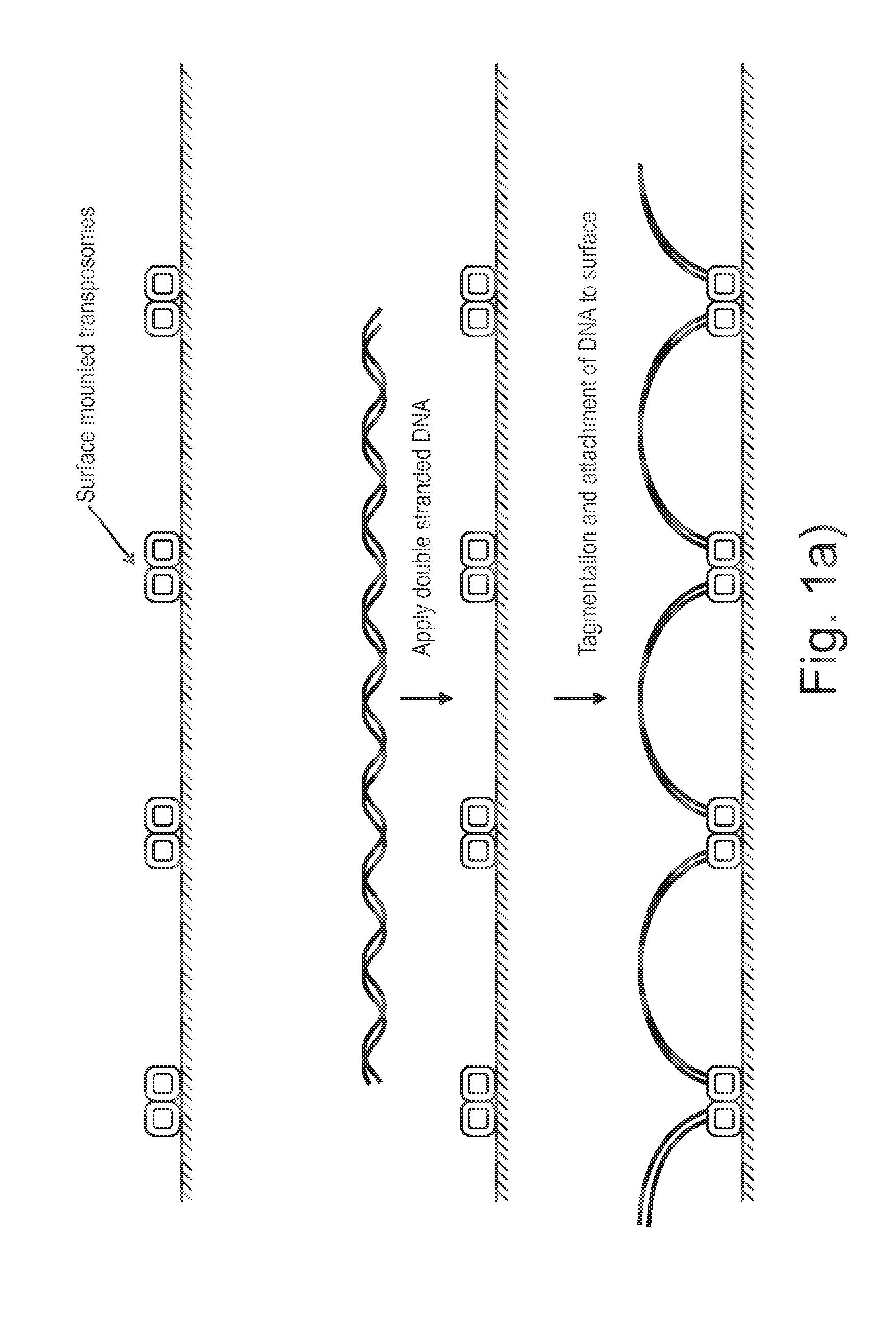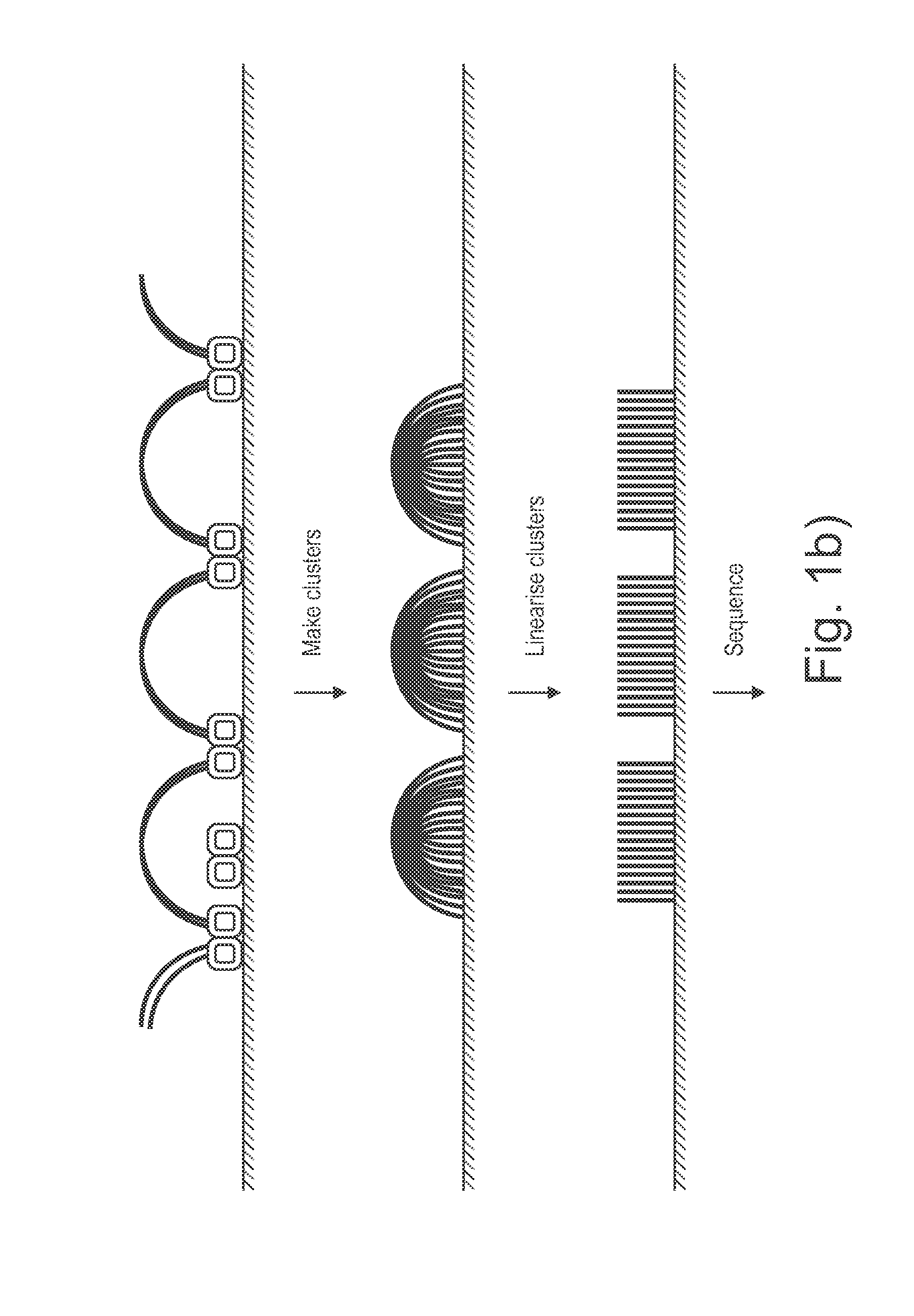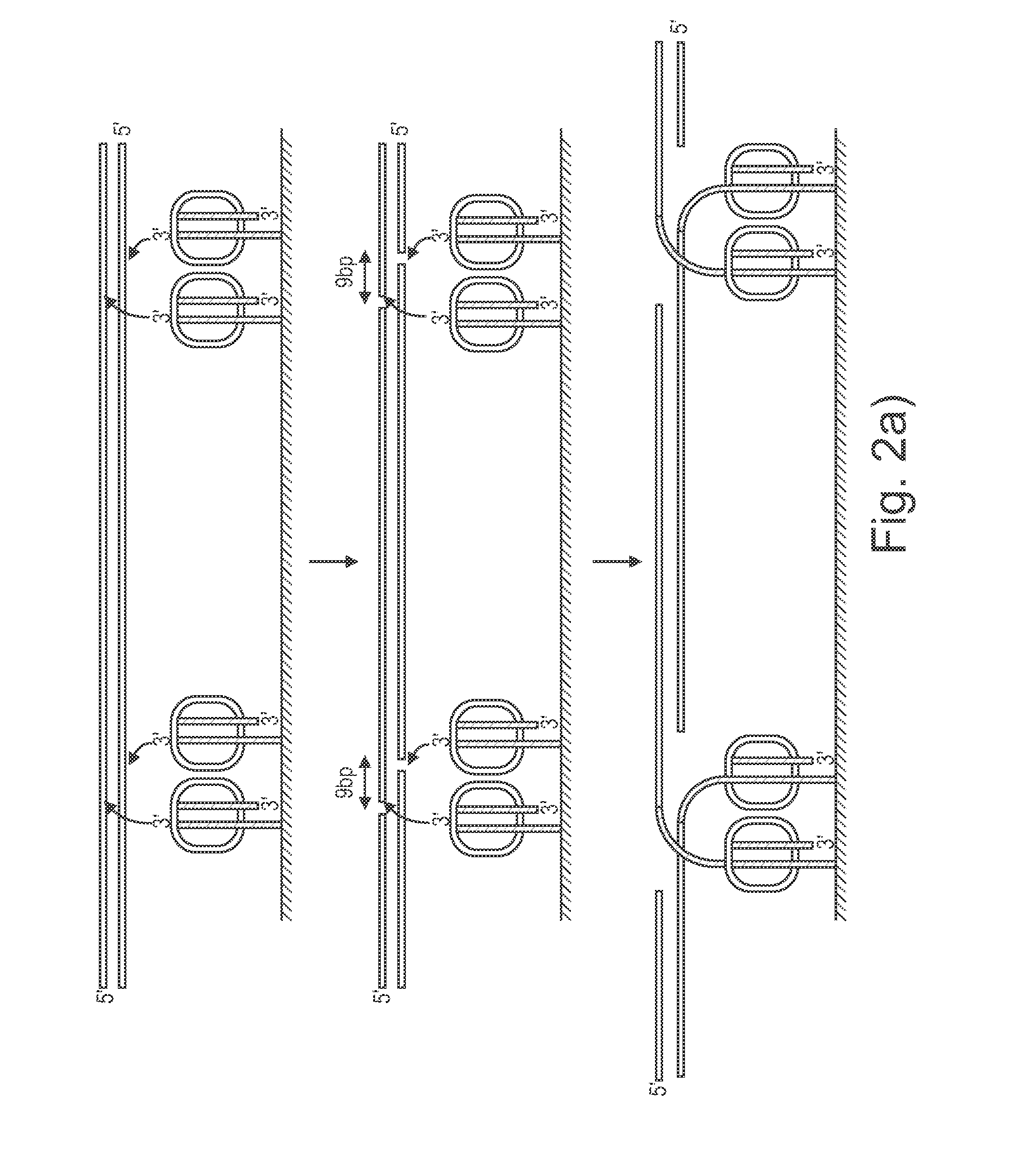Sample preparation on a solid support
a solid support and sample technology, applied in the field of sample preparation on a solid support, can solve the problems of difficult tagging and recovering of tagged dna fragments, expensive, laborious, time-consuming,
- Summary
- Abstract
- Description
- Claims
- Application Information
AI Technical Summary
Benefits of technology
Problems solved by technology
Method used
Image
Examples
example 1
Surface Tagmentation on a Flowcell
[0131]This example describes an experiment confirming the embodiment illustrated in FIGS. 4a and 4b (surface tagmentation followed by solution tagmentation).
[0132]An experiment on an 8 lane flowcell was carried out using a list of conditions and controls as shown in FIGS. 6a and 6b. Lane 6 indicates the complete end to end exposition of the method: unfragmented E. coli genomic DNA was added to a flowcell where upon it was tagmented by the surface bound transposomes. Next heat was applied to the flowcell to selectively dehybridize the naked ME sequences thus abolishing them as a target for a second tagmentation reaction when transposome was next added from solution. Following the second tagmentation reaction, clusters were generated and ‘paired-end’ sequenced (2×36 base reads) was performed. Sequencing metrics are given in slide 7 which show that in lane 6, 73.14% of clusters passed filters and 74.69 of these aligned. This provides enough data to yie...
example 2
Surface Bound Sample Preparation from an E. coli Scrape
[0142]An E. coli sample (5 mm by 2 mm scrape from a lawn on an agar plate) was scraped and resuspended in a tube containing water and glass beads. The suspended cells and beads were mixed using a vortex mixer to break open the cells and then centrifuged to pellet cellular debris. The supernatant (containing the cell lysate, including proteins and nucleic acids) was removed and added to a Genome Analyzer flowcell (Illumina, Inc., San Diego, Calif.) having immobilized transposomes according to the protocol described in Example 1.
[0143]Cluster generation was performed on the flowcell using a Cluster Station sample preparation device (Illumina, Inc., San Diego, Calif.). After cluster generation, a paired-end sequencing run was performed with reads of 36 bases in each direction.
[0144]For Read 1, 58.99% of clusters passed filters and 92.16 of these aligned. For Read 2, 58.99% of clusters passed filters and 55.08 of these aligned. Thes...
example 3
[0145]This example describes methods to avoid tagmentation of surface-bound oligonucleotide duplexes when solution phase transposomes are added to a flowcell.
[0146]One method for assembling transposomes on the surface of a flow cell is to take a standard paired end flow cell, hybridize a ‘splint’ oligonucleotide against the P5 and / or P7 surface grafted oligonucleotides forming an extendable overhang that can be extended with a polymerase to make a duplex containing a double stranded ME sequence. At this stage transposase enzyme can be added to form a functional surface bound transposome (FIG. 5d). If only a portion of the duplexes form a transposome, remaining ‘naked’ ME duplexes may subsequently become targets for tagmentation by either nearby surface-bound transposomes or transposomes added from solution. Furthermore, fully assembled surface transposomes contain dsDNA portions upstream of the ME sequences that can also become targets for tagmentation by nearby surface-bound transp...
PUM
| Property | Measurement | Unit |
|---|---|---|
| pH | aaaaa | aaaaa |
| pH | aaaaa | aaaaa |
| sizes | aaaaa | aaaaa |
Abstract
Description
Claims
Application Information
 Login to View More
Login to View More - R&D
- Intellectual Property
- Life Sciences
- Materials
- Tech Scout
- Unparalleled Data Quality
- Higher Quality Content
- 60% Fewer Hallucinations
Browse by: Latest US Patents, China's latest patents, Technical Efficacy Thesaurus, Application Domain, Technology Topic, Popular Technical Reports.
© 2025 PatSnap. All rights reserved.Legal|Privacy policy|Modern Slavery Act Transparency Statement|Sitemap|About US| Contact US: help@patsnap.com



